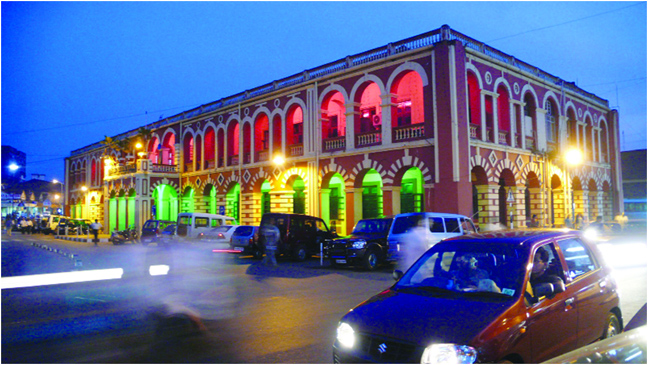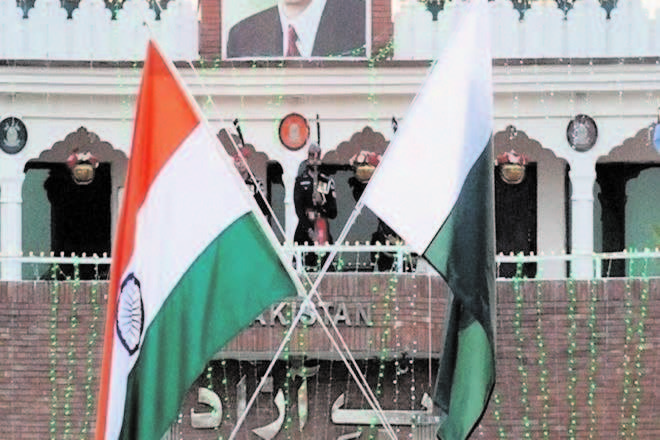
Spice it up. That remains Margao’s mantra. The town, located on the banks of River Sal in Salcete Taluka serves as the administrative headquarters of South Goa district, celebrates arts, films, festivals, food, music, sports and theater like no other in Goa, thus earning itself the tag of the cultural capital of the state. Just as the colonizers left a mark on local culture, Goa, too, made a dent on their lifestyle. In Portugal today, people buy Margao, a brand of spices and aromatic herbs. For soccer fans, a visit to FC Goa’s home stadium in the town is a must. Like the other parts of Goa, the history of Margao is laced with pogroms and destruction of ancient heritage by the Portuguese raiders. And yet, like elsewhere in Goa, the social harmony amongst its communities sets an incredible benchmark. Mario Miranda, the famous cartoonist and one of the biggest icons that Goa has gifted to the world, lived and died near Margao. Take a moment to soak in Margao’s aroma even if you are headed to the nearby popular beaches of Benaulim, Betalbatim, Colva, Cansaulim, Majorda or Utorda.
TOWN CENTER
Margao city centre is crowned with one of the most prominent colonial-era tiled-roof buildings that serves as the municipal council office. Earlier known as Camara Municipal de Salcete, referring to Salcete taluka, the Margao Municipal Council oversees its operations from this imposing central landmark. The exterior walls, once red and white in color, don a bright yellow and white outlook that make it ‘fit-in’ the overall color scheme of the city. Besides offering regular administrative services such as taxation and registration certificates to life events, the municipal council also runs an extremely popular public library that marked its centenary celebrations in 2014.
Just across the street from this Municipal Council building are the other two central landmarks of the city—Municipal Garden and Aga Khan Children’s Park at the northern end. Separated by a narrow walkway frequented by vendors, an aerial view would make these two appear as one big garden. The children park was constructed in 1959 by a local businessman named Abdul Javerbhai Mavany in the honor of visiting HH Aga Khan, the Imam of Nazari Ismaili Muslims and the leader of the Khoja (Khwaja) community in India. Situated next to the market bus terminal, the green patch is often dubbed as ‘lungs of Margao’.
NEW MARKET AND DAMODAR MANDIR
Prepare your senses for an onslaught if you plan to visit the New Market. Flowers and garlands, bottled pickles, heaps of spices neatly stacked up, bakeries, juice corners, restaurants, vendors selling local delicacies, jewelry, colourful footwear, lingerie and clothes hung on display in tiny outlets—all this and more awaits you in an incredible maze of narrow lanes of this canopy-topped New Market. While at it, look for the local Goan delicacy of Bebinka or Bibik, a type of pudding, made from flour, clarified butter, eggs and coconut milk. You may also want to buy its famous mango pickles or indulge in souvenir shopping. This could be a fun place to practice your bargaining skills. Depending on your interest, you can easily spend 30 minutes to half a day, shopping or simply moving around the labyrinth. Though some may dismiss it as a regular market, this is a must-visit if you wish to get a picture of everyday life of residents and traders in the vicinity.
OUR LADY OF GRACE CHURCH
Mary, the mother of Jesus, is known by many titles. A few names are dogmatic while others are derived from popular art and poetry. Our Lady of Grace Church, referred to as Nossa Senhora da Graca in Portuguese, sings the hymn of ‘Ave Maria Gratia Plena’ or ‘Hail Mary Full of Grace’, based on Sir William Scott’s famous poem ‘The Lady of the Lake’ from the early 19th century. This church was once a military chapel and was known as Capela de Batalhao. If you have been to St Augustine’s Tower in Old Goa, you would remember the ruins of its church that was known by the same title. While those ruins date back a few centuries, this church in Margao is modern (built in 1970) and celebrates its annual feast on the first Sunday of February.
The Our Lady of Grace Church is located opposite the walkway dissecting the Municipal Garden and the Aga Khan Park. Given its unassuming entrance, a gated staircase flanked by retails outlets, it may easily be overlooked; especially if you are walking on the same eastern side of the garden. As you scale the stairs, observe a statue of Mary with folded hands to the right (south) and a large colorful mural on the exterior wall of the church.
GOMANT VIDYA NIKETAN
This is yet another living legacy near the town center on Faria Road. In the year 1910, when Portugal became a republic, it marked the end of religious discrimination in Goa. The residents of Margao used the newfound liberty to establish Gomant Vidya Niketan. It started off as a humble library known as Saraswat Brahman Samaj 1912 and then diversified. The library continues on the ground floor with an amphitheater upstairs. It grew to its peak as an epicenter of all cultural activities (primarily Konkani and Marathi language) for later half of the 20th century, hosting various talks, exhibitions and classical music concerts. Though Ravindra Bhavan, given its size and modern amenities, is now the new address for most of the large scale events in Margao, Gomant Vidya Niketan continues to enthrall its audience with regular performances and events of national significance. Housed in a multi-storeyed this site, right at the northern end of Market bus terminal, it now also hosts private events such as weddings and receptions. If you are lucky on the dates of your travel in Margao, you may be able to enjoy a Konkani music concert, a Marathi play or simply gate crash to experience a traditional Konkani wedding at Gomant Vidya Niketan and click a few pictures with the bride and groom!
MARUTI MANDIR
Maruti is another name for Lord Hanuman, the legendary God from the Hindu epic Ramayana. Also known as Mahavira or the mighty warrior, this Vayuputra (the son of God of Wind) is believed to the symbol of strength and energy. Lord Maruti was blessed that his followers will be safe from the wrath of Mangal and Shani, the personification of planetary powers of Mars and Saturn. Hence, Tuesdays and Saturdays are observed as special days for the worship of this deity. Source: Happytrips





Be the first to comment